- Home
- Neal Stephenson
The Rise and Fall of D.O.D.O. Page 4
The Rise and Fall of D.O.D.O. Read online
Page 4
I saw that he was trolling me—waiting for me to pick up the bait.
No, it was more than that. He wanted me to mention a possibility that he could think about, but never say out loud—because he was all Mr. Science.
So I did. “Let’s switch it up a little, then,” I said. “And swap out the white lab coat and the clipboard for, I don’t know, a pointy black hat and a broom. And lose a pronoun. If she did somehow have the ability to choose which world she was going to be shunted to when she opened the lid—if she could control the outcome—”
“It would look like magic.”
“What do you mean ‘look like’? It would be magic.”
“Just saying,” Tristan said, “that it’s about choosing possible outcomes that already exist—slipstreaming between closely related alternate realities—as opposed to bringing those realities into existence.”
“But that’s a distinction without a difference.”
“As far as normal observers are concerned? People who haven’t studied quantum physics? Sure,” he agreed.
“Put it however you like,” I said. “A witch may summon the desired effect from a parallel-slash-simultaneous reality. Thus the historical references of witches’ magic as ‘summoning’—that is quite literally what they were doing.”
“My hypothesis,” Tristan said—pronouncing the word with exaggerated care, since he had a few Old Tearsheet Best Bitters in him—“is that photography disables this summoning, as you called it. Photography breaks magic by embalming a specific moment—one version of reality—into a recorded image. Once that moment is so recorded, then all other possible versions of that moment are excluded from the world that contains that photograph.”
“I get it,” I said. “There is no wiggle room left in which to function magically.”
He nodded. He seemed relieved to have got all of this off his chest. And that I hadn’t laughed him out of the room.
“You’ve been thinking about this for a while,” I said.
He nodded.
“But it wasn’t until we saw the daguerreotype of the solar eclipse that the penny dropped.”
“That’s right.”
“That was only about the bazillionth daguerreotype ever made,” I pointed out. “People had been taking photographs for sixteen years by that point. What’s so special about that one?”
“The scope of it, I think,” Tristan said. “The number of minds, and worlds, affected. If I’m Louis Daguerre screwing around in my lab in Paris, taking pictures of whatever is handy, then I’ve collapsed the waveform, yes. But only inasmuch as it encompasses my brain and a few little objects in my lab. If I show the daguerreotype to my wife or my friend, then the effect—the collapsing of the waveform—spreads to them as well. And we can guess that witches who live in the neighborhood might sense a dampening of their magical abilities, without understanding why. But the total eclipse of the sun on July 28, 1851, was probably witnessed by more human beings than any other event in the history of the world up to that point.”
“Of course,” I said. “Everyone in Europe could see it—”
“Just by looking up into the sky. Hundreds of millions of people, Mel. That event captured more eyeballs, at the same moment, than any Beyoncé video on YouTube. And to the extent that it was frozen, embalmed, on a daguerreotype, well—”
I was nodding. “If previous uses of photography had dampened magic, then this was like dumping the Atlantic Ocean on it.”
He nodded. “When the shutter opened to capture that first perfect image of the eclipse, magic ceased to function across all human societies.”
We back-checked the dates of all documents from 1851. Indeed: there were three from the first half of the year (two English, one Italian). There was a fragment of one in late July (Hungarian). There were none after July 28, the date of the eclipse. None.
“That’s it,” muttered Tristan, preoccupied, getting to his feet. He rested his hands on his desk and stared absently at the wall.
“Yes,” I said. I felt deflated. Although he’d never told me why DODO was so interested in understanding magic, common sense screamed it was because they wanted to be able to do it. Department of Doing the Occult? Which clearly could never happen: “There’s no getting rid of photography, so there’s no bringing magic back.”
Tristan froze and, after a beat, jerked his head in my direction. “You’re right,” he said, staring. “That’s it. Where there is no photography, there could still be magic.”
“That’s not quite what I said.”
He began to pace the office. We had made it somewhat larger by knocking out walls that separated it from adjoining spaces, but this still required following a figure-eightish path between piles of books, artifacts, freestanding gun safes, to-be-recycled beer bottles, and still-unexplained high-tech military gear. “How do we get rid of photography,” he murmured, more to himself than to me.
“We cannot ‘get rid of photography.’”
“No, it’s definitely possible,” he insisted, eyes unfocused as he paced. “I just have to figure out how it’s done.”
“What do you mean, how it’s done?”
He shook his head, grimacing, dismissing me. “I’m not seeing something,” he said. “What am I missing?”
“You’re missing the part where photography became ubiquitous and all magic went away forever.”
He turned to look at me, his eyes focused now, and bright. “No,” he said, almost scolding me. “It’s not a lost cause.”
That was not the tone of hypothesis or theory; that was the tone of either faith or knowledge. I felt a shiver run down my spine.
“I realize there are a lot of things you can’t tell me,” I said, “but whatever it specifically is you’re not telling me at this precise moment . . . fucking tell me. Otherwise I’m useless.”
His gaze went fuzzy again as he engaged in some brief mental soliloquy. Then he nodded. “I can’t tell you much,” he said. “But I can tell you that we know it’s possible.”
“. . . we?”
“DODO,” he confirmed. “There’s evidence. That’s all I can say.”
“Wow,” I said, feeling pathetically inarticulate for a linguist. “Good God.”
“Yes. It’s a thing,” he said. “It’s real. There’s just”—he made a frustrated reaching gesture—“there’s a missing piece. And I’m so close. It’s got to be photography, that makes sense, it aligns chronologically, it aligns with magic failing slightly earlier in societies that valued and used the photographic image, and lingering just a little in cultures that didn’t, like Islam and aboriginal tribes. That’s got to be it. There has to be some way to make photography not happen.”
“But the existence of cloud technology, cell phones, video surveillance, means photography is literally everywhere.”
“I don’t need to get rid of it everywhere,” Tristan said impatiently. “Just within one manageable space.” He stopped short, in the middle of the room, and looked around through narrowed, thoughtful eyes as if at invisible colleagues. “Okay, that’s part of it. A controlled environment. If we can create an environment in which photography not only does not happen, but could not happen, then perhaps magic could exist within that space.”
“And you guys, you DODOs, think someone’s already doing that?”
He nodded slowly. “If they can do it, we can do it. We just have to figure out how.” For a moment he was gone, lost completely in thought, even the alertness of the trained soldier distracted by the intense introspection of the thinker. “Let’s break it down,” he said. “First: photography collapses the wave function of light.”
“Yes. Or so you told me. So I’m just going to sit here and say yes.”
“So,” he continued, “if we can interfere with that collapse—” And then seeing the stupid look on my face, tried, “If we can keep the quantum balls in the air—”
“Like, by not opening the lid of the box?”
“What box?”
/> “The box with the cat in it. Schrödinger’s cat.”
He gave a little shake of the head. “That’s just a thought experiment. But you’re onto something,” he said.
I knew perfectly well that it was a thought experiment. But that could wait. It felt like we were on the trail of something. And I was fascinated—and a little alarmed—by the subtext, which seemed to be that this wasn’t all just a dry academic research project, but something akin to an active military campaign. Someone, somewhere in the world was doing magic. The government of the United States didn’t know how—or perhaps even who. It was a Sputnik moment: someone else had stolen a march on us. Tristan’s shadowy government entity had obviously been thrown together in a panicky effort to catch up.
Tristan settled back down, and muttered buzzwords (“collapse of wave function,” “quantum entanglement”). I typed them into Google, while Tristan, hunched over his Shiny Hat terminal, used other search engines only available to people working for shadowy government entities. An initial search for “quantum wave function” yielded four hundred thousand responses (it went up to three million without the quotes) and advanced searches—adding “collapse,” etc.—had brought it down to about thirty-five thousand. Mostly what came up were YouTube videos of geeky-looking high school kids attempting experiments in their parents’ cellars, often with refrigerators or the remnants of darkroom chemicals, frequently resulting in small but interesting explosions. There were also a kajillion academic papers that Tristan, the undergraduate physicist, dismissed by their titles alone. We added more and more modifying terms to focus the search. In this way, several hours passed. No dice.
We stopped for dinner (take-out Indian—actual Indian food, not the insipid so-called ‘curry’ now coming into fashion here in Victorian London thanks to the East India Company’s running riot over the Punjab). We then continued the search all evening; I biked home, slept, and biked back, and we kept searching. Late morning, we paused long enough to take a walk along the Charles, as being cramped in that small dingy office so long was crazy-making. For most of the walk, Tristan continued to brainstorm in a soliloquy that further convinced me he was both brilliant and a pretty bad listener.
Back at his office after the walk, he ransacked the fridge for some leftovers that hadn’t gone bad, while I returned to my desk to scroll through the results of yet another highly modified Google search. As long as Tristan wasn’t looking over my shoulder, I tried something: I searched on “Schrödinger’s cat experiment” and then began adding in other terms to narrow it down. I excluded “thought experiment” and its German equivalent, Gedankenexperiment. I threw out anything that included such phrases as “will shock you!” and “you won’t believe what happened next!” I skewed the search in favor of words like “actual,” “practical,” and “real-world.”
Reader, you won’t believe what happened next. A single response came up.
“Rejected patent application,” I read aloud to Tristan. “Someone from MIT applied for a patent for . . . hang on . . .” My eyes skimmed over the legalese and bureaucratese (two languages I had never mastered), until I found something descriptive to read. “Something he calls a cavity, intended to quote ‘jam enemy nations’ surveillance systems by maintaining a feline test subject in an indeterminate state of existence.’ Unquote.”
I heard the microwave shut down. “I can’t hear a thing when this is running,” Tristan said. He turned to look at me. “I could have sworn you just said something about a feline test subject.”
I looked him in the eye and nodded. “It’s called the Ontic Decoherence Cavity. ODEC. Proposed by Professor Frank Oda. Kind of a narcissist, I guess.”
“How do you figure?”
“He named it after himself. Oda—ODEC.”
“I’m not so sure. ‘Ontic’ means—”
“I know what it means.”
“Something to do with knowledge. Decoherence, as I am sure you are well aware, means its negation. Something about this cavity prevents the formation of definite knowledge. So, it lines up pretty well with what we are looking for.”
“Cool!” I exclaimed, and began Googling Frank Oda. “Let’s figure out where he lives and—”
“But it’s a joke,” Tristan said flatly. “The guy is a troll. Oh, a scientifically sophisticated troll. Making a very clever in-joke. But a troll nonetheless.”
“What makes you so sure?”
“The part about the feline test subject. Mel, this is just a prank. A fake patent application that this guy put on the Internet for the lulz. He slipped it past some dipshit patent examiner who didn’t know physics, had never heard of Schrödinger’s cat. Any physicist who stumbles across it will get a belly laugh out of it and move on. But we need to confine ourselves to serious—”
He stopped to read the screen of my laptop, which I had swiveled around to aim in his direction.
It was a thirty-year-old article I had dredged up from the archives of The Howler, an alternative weekly newspaper, now defunct, but once a common sight on the streets of Boston and Cambridge. Known for its leftist politics and muckraking fervor. The article featured two photographs. On the left, a middle-aged Asian-American man, captured by a sidewalk paparazzo as he took out the garbage. On the right, a stock photograph of a wire mesh enclosure in some animal shelter, housing a menagerie of stray cats.
CAT’S OUT OF THE BAG, PROFESSOR ODA!
MIT professor denies cruelty to animals, but accepts early retirement.
Tristan licked curry from his fingers, reached for the trackpad, and zoomed the image on the left. “Empty boxes, old newspapers, a milk jug, and a wine bottle.”
“You’re identifying the contents of the garbage bag?”
“No dead cats. Or live ones.”
“Maybe it’s a Schrödinger’s Hefty bag.” I spun the computer back around to face me, and Tristan scampered around the table so that he could read it over my shoulder. Parsing the story wasn’t easy given the amount of tabloid-style innuendo and leaps of inference, combined with the heavy presumption that Frank Oda was guilty of something. But the bottom line seemed to be this: Professor Frank Oda, a theoretical physicist at MIT, had, three decades ago, gone off the reservation and started attempting to do experimental physics.
It had started with what seemed like a gag: a prop, for use in undergraduate physics lectures, consisting of a box with an actual cat in it, and a mockup of the apparatus envisioned in the Schrödinger’s cat Gedankenexperiment. So far, so good. A fine way to liven up an otherwise dry lecture. No cats were harmed; the cat-killing mechanism was obviously fake, just a glass bottle with a skull and crossbones painted on it and a Rube Goldberg contraption involving a rat trap and a Geiger counter. But if the story was to be believed, the construction of this device had caused Oda to become obsessed with the underlying concept. Which was very real—foundational to quantum mechanics, and not disputed by anyone.
“Holy fuck,” Tristan exclaimed. Which for him, clean-cut West Pointer that he was, was a mickle oath. We were on page three now. “He actually did it.”
“No way, they must have got something wrong.”
Tristan pointed to a phrase in the middle of the screen.
Records obtained by The Howler from the Somerville Animal Shelter indicate that Dr. Oda “adopted” no fewer than six cats from the facility over a span of three months in spring of last year. This coincides with a formal request made by MIT authorities that Oda remove “all apparatus involving living test subjects” from his on-campus laboratory. According to a former graduate student interviewed by The Howler, who requested anonymity for fear of possible professional repercussions, Dr. Oda complied with the request by relocating the ODEC project to the basement of the Cambridge home that he shares with his wife, Rebecca East.
“Maybe Rebecca’s a cat lover,” I said.
“Then why were the cats being kept in his lab at MIT until they kicked him out?”
“There’s gotta be an explanation.”<
br />
“Keep scrolling.”
Contacted at his home by a reporter from The Howler, the disgraced mad scientist denied all wrongdoing. “This was never about the cat being alive or dead,” he insisted, repeating a claim he had also made in internal MIT documents obtained by The Howler. “Killing the cat isn’t of the essence. The point is that the cat is in either one state, or another. I was experimenting with other states—non-fatal, non-painful.” Pressed by the reporter to provide specific examples, Oda seemed flustered and became inarticulate—which is consistent with the claim made by anonymous sources in his neighborhood that he has, in recent years, exhibited signs of mental impairment consistent with senile dementia. “I don’t know, how many states is it possible for a cat to be in? Asleep or awake. Sitting down or standing up. Purring or meowing. Any of them is as good as alive or dead for purposes of the experiment.” Asked why an equivalent experiment couldn’t have been performed on a non-living subject, Oda shook his head condescendingly. “The test subject must contain living, active brain tissue,” he said. “That’s how the apparatus works.” The interview was cut short at that point by Oda’s wife, Rebecca East, who emerged from their house—a colonial-era dwelling on a tree-lined street near the Harvard campus—brandishing a broom at the reporter. Ms. East, who appeared upset, insisted that none of the cats had been mistreated, adding that the shelter from which they had been adopted was a so-called “kill shelter,” meaning that all of the animals had been earmarked for euthanasia anyway. The Howler’s reporter, fearing for her personal safety, fled from the premises and later filed a report with the Cambridge Police Department. The subsequent criminal investigation was terminated when Ms. East claimed to the investigating officer that she had been using the broom to sweep vegetable debris from her front walk.
“Off with their heads!” I exclaimed. Tristan had already tired of reading the article and begun searching Oda’s background using his top-secret equivalent of Google. “That’s pretty old history, Stokes,” he said, without looking up. “And not even accurate. Let it go.” He kept reading. “Check it out—this guy also worked for DARPA, and what he did there was—”

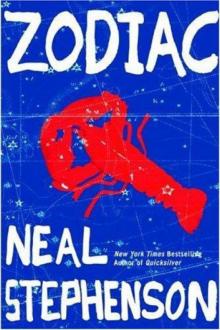 Zodiac: The Eco-Thriller
Zodiac: The Eco-Thriller The Mongoliad: Book One
The Mongoliad: Book One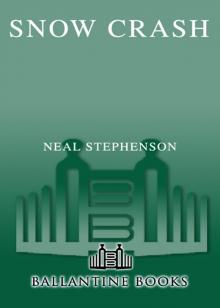 Snow Crash
Snow Crash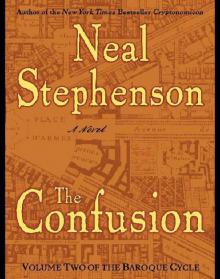 The Confusion: Volume Two of the Baroque Cycle
The Confusion: Volume Two of the Baroque Cycle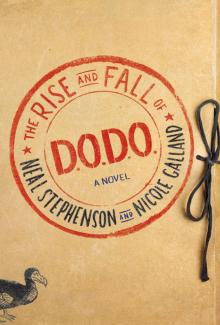 The Rise and Fall of D.O.D.O.
The Rise and Fall of D.O.D.O. The Diamond Age: Or, a Young Lady's Illustrated Primer
The Diamond Age: Or, a Young Lady's Illustrated Primer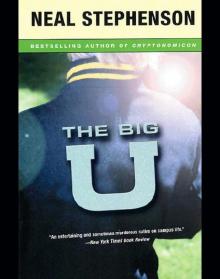 The Big U
The Big U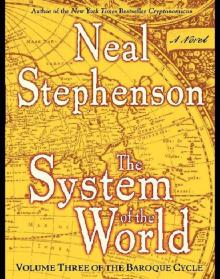 The System of the World: Volume Three of the Baroque Cycle
The System of the World: Volume Three of the Baroque Cycle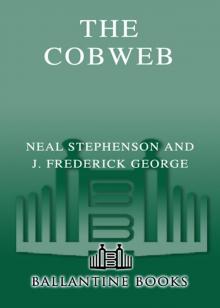 The Cobweb
The Cobweb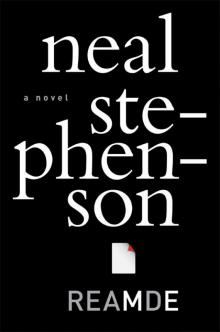 Reamde
Reamde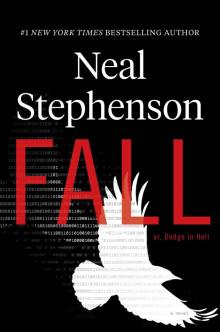 Fall; or, Dodge in Hell
Fall; or, Dodge in Hell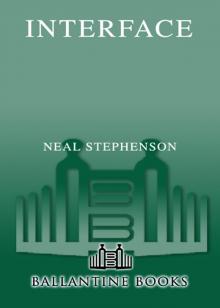 Interface
Interface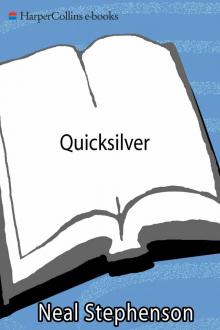 Quicksilver
Quicksilver The Mongoliad: Book Three
The Mongoliad: Book Three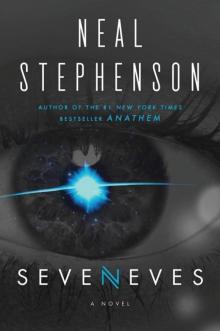 Seveneves
Seveneves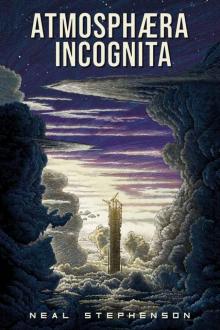 Atmosphæra Incognita
Atmosphæra Incognita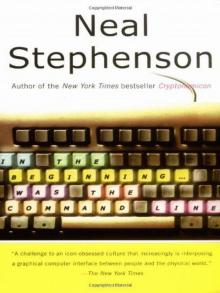 In the Beginning...Was the Command Line
In the Beginning...Was the Command Line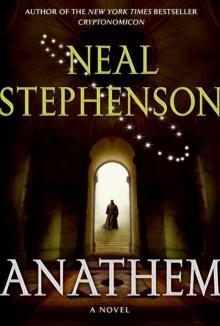 Anathem
Anathem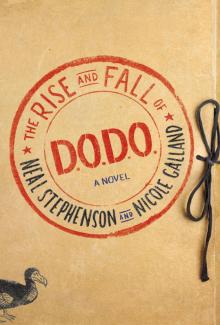 The Rise and Fall of D.O.D.O.: A Novel
The Rise and Fall of D.O.D.O.: A Novel The Mongoliad: Book Two
The Mongoliad: Book Two Diamond Age or a Young Lady's Illustrated Primer
Diamond Age or a Young Lady's Illustrated Primer THE System OF THE WORLD
THE System OF THE WORLD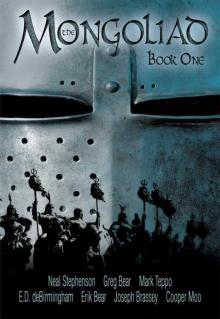 The Mongoliad: Book One tfs-1
The Mongoliad: Book One tfs-1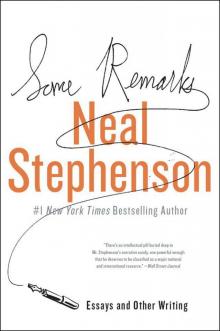 Some Remarks: Essays and Other Writing
Some Remarks: Essays and Other Writing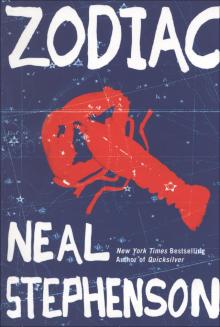 Zodiac
Zodiac Spew
Spew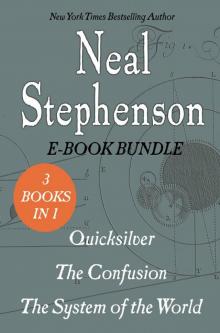 The Baroque Cycle: Quicksilver, the Confusion, and the System of the World
The Baroque Cycle: Quicksilver, the Confusion, and the System of the World The Diamond Age
The Diamond Age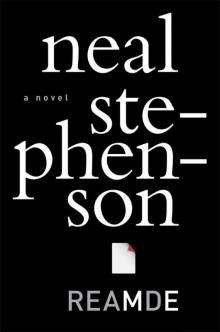 Reamde: A Novel
Reamde: A Novel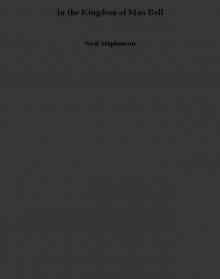 In the Kingdom of Mao Bell
In the Kingdom of Mao Bell Mother Earth Mother Board
Mother Earth Mother Board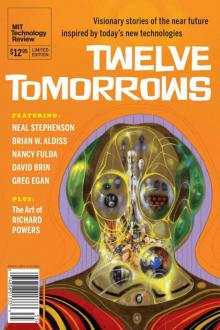 Twelve Tomorrows - Visionary stories of the near future inspired by today's technologies
Twelve Tomorrows - Visionary stories of the near future inspired by today's technologies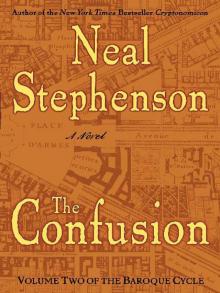 The Confusion
The Confusion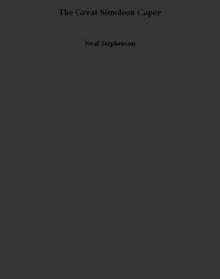 The Great Simoleon Caper
The Great Simoleon Caper The Mongoliad: Book Three tfs-3
The Mongoliad: Book Three tfs-3